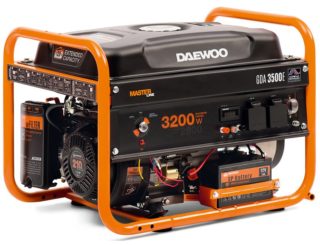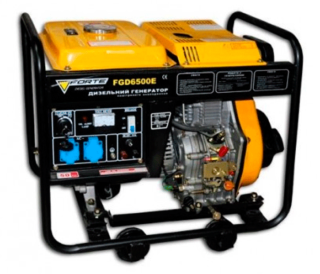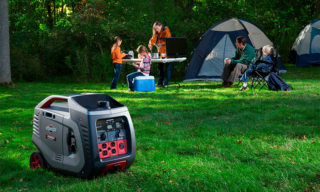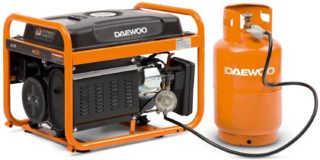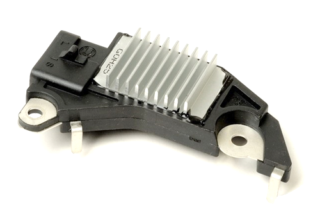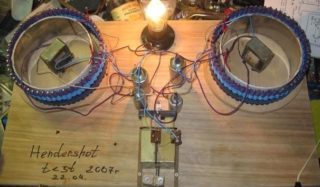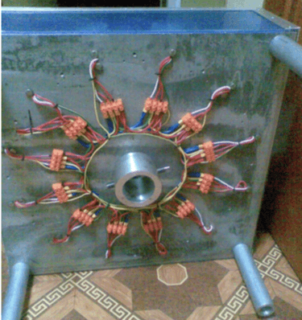A device called an "electric current generator" is known to most consumers according to information obtained from popular sources. They mainly relate to powerful electric machines that generate energy in hydropower plants. However, in addition to large-sized station aggregates, industry produces compact electromechanical generators used as stand-alone devices in all spheres of human activity.
Operating principle
The first samples of electric generators were designed to work in the field and at facilities remote from industrial centers. With their help, it was possible to power electric welding machines or the required number of lighting devices. Over time, these stand-alone devices began to be used in homes and other suburban buildings, due to such a common phenomenon as unstable power supply. Electric generators are especially common in areas remote from the city, where a power outage is considered an ordinary occurrence.
An electric generator is a device capable of converting thermal energy into electricity. Another name is electromechanical induction generators. As a source, energy carriers are used, which have a significant heat capacity sufficient to release the desired amount of heat. It can be:
- diesel fuel;
- traditional gasoline;
- natural gas or just firewood.
Generators operating on alternative sources (without fuel) are widely used. These include air (wind), water, solar and thermal energy converters.
The principle of operation of electricity generators is based on the transformation of heat generated as a result of fuel combustion into mechanical rotation of the drive. Due to this, an electromagnetic field is formed in them, which leads to the appearance of EMF in the stator coils. The electrical circuit of the unit is selected so that the output produces an alternating voltage of the desired type, size and quality.
Types of Generators
According to the class of energy carrier (fuel) used during operation, all known generating devices are divided into the following types:
- gasoline;
- diesel;
- gas;
- wood aggregates or hydrogen-powered, for example.
The first two types of electric generators attract the user by the fact that they use a ready-made engine that runs on the appropriate fuel and needs only the finalization of the drive part. Wood, hydrogen and gas samples are more complex devices and are characterized by low efficiency.
By the degree of autonomy, all devices manufactured by the industry are divided into stationary and mobile models, and according to the type of alternating current received at their output, they are divided into single-phase and three-phase ones. According to the direct purpose of the units, the known types of power generating devices are divided into main and backup, and according to the field of application - into household and industrial products.
Applications and selection rules
The scope of electric generators extends to many areas of human activity, forced to use them as primary or secondary sources. A typical power generator is used in the following areas:
- during the construction of bridges, dams, crossings and other construction objects remote from the main power line;
- during field work related to the use of electricity and in summer cottages (in the absence of a centralized energy supply);
- in wintering camps, polar stations, in hunting grounds, as well as in remote military units.
Generators are in demand in private homes and public buildings located in rural areas, where power outages occur with enviable regularity.
When choosing branded generators, it is important to consider the following characteristics:
- type of energy carrier (combustible material);
- output power;
- cooling methods;
- the presence of additional features.
The first of these indicators is selected based on operating conditions - ease of use and storage of fuel in a residential building. For urban apartments, the most suitable option is a gas generator, to connect which it is enough to draw up the appropriate eyeliner. The output power is selected taking into account specific needs: which units are supposed to be connected to the source. In the same way, a method of cooling equipment that is optimally suited for the unit with the declared power is selected. Among the additional functions of the devices, the following features are highlighted:
- output voltage adjustment;
- obtaining a constant (rectified) current;
- availability of redundant output terminals and relay regulator.
Before going to the store, it is also important to determine the presence in the model you like of individual indicating devices by which you can control the voltage level. You should also take into account the cost of the purchased product, which should be justified by the benefits received during its operation.
DIY fuel-free generators
Generators operating on the principle of using free energy have long attracted the attention of many natural scientists. Tesla and other famous scientists were also involved in the development of fuel-free devices. To date, many schemes have been invented that work on various energy principles. The list of these devices:
- Hendershot apparatus;
- generators of Romanov, Tariel Kanapadze and Adams;
- Smith and Bedini devices.
Self-assembly of such a generator is most conveniently considered using the example of Adams's layout.
Preparatory operations
To assemble the device with your own hands, you will need to prepare a lot of initial parts:
- magnets
- copper conductors;
- two coils;
- sheet steel (as a means for manufacturing the device case);
- bolts, washers and screws.
Magnets are chosen equal in size and as large as possible. In this case, the induction field is more powerful, and much more energy will be generated.
The positive pole of one magnet when assembling the generator is set strictly opposite to the other plus.
Copper conductors are selected so that their cross section is of the order of 1.25 mm. Based on them, two coils are wound, which are sometimes taken from old engines of a suitable size. With self-winding, they carefully monitor that the turns lie exactly in a row close to each other. Auxiliary parts will be required for fixing individual elements of the assembly device.
Assembly
The assembly order of a homemade generator:
- Holes for mounting on coils are drilled in magnets.
- They are alternately fixed to the frames with bolts.
- Coils with magnets are mounted on a pre-welded metal frame so that there is a small gap between their planes.
The presence of a gap will allow the magnets to rotate freely.
At this stage of assembly, the unit is ready for inspection. To carry it out, it is enough to manually rotate the magnets several times around its axis. Provided that the structure is correctly assembled, voltage will appear at the ends of the windings fixed to the frame.
The considered home-made device is the simplest model of a free energy generator, intended for demonstration purposes. On its basis, after appropriate revision, a full-fledged device is assembled, capable of generating electricity to illuminate a country house or cottage. Those who do not want to engage in the assembly of a home-made design, it is better to purchase a finished product from trusted manufacturers.
